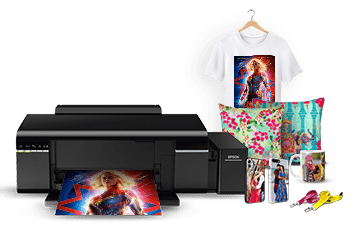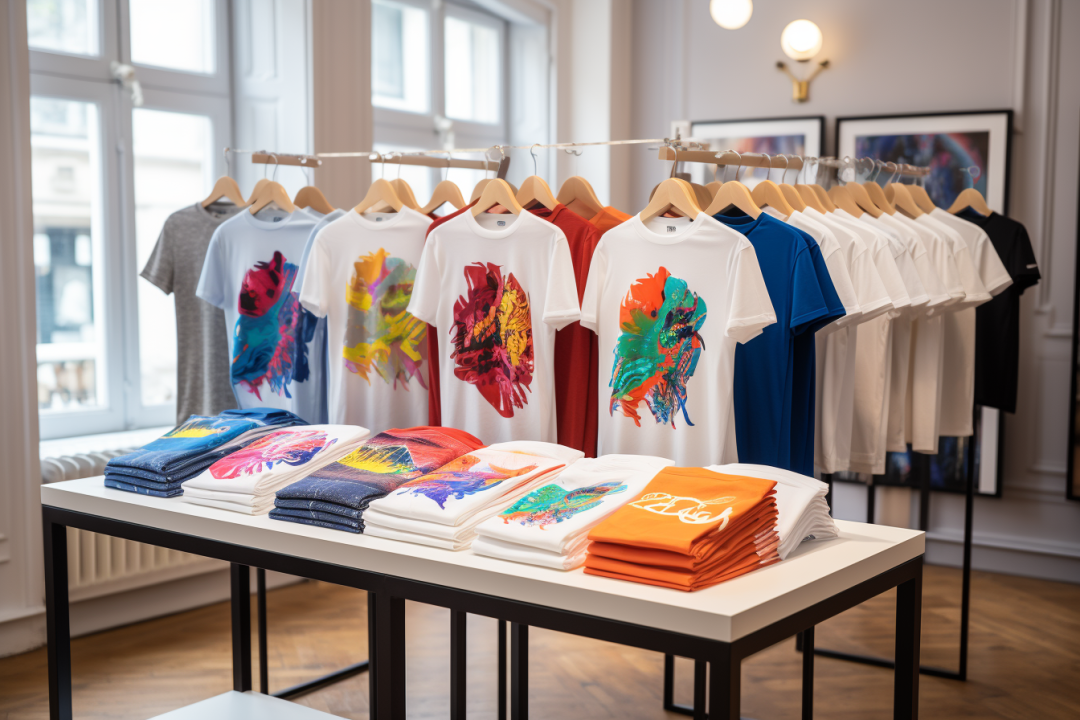A Comprehensive Guide to the Various Types of Fabric Printing Methods
Embarking on an expedition of towel printing techniques exposes a fascinating junction of practice and innovation. Each technique, from the thorough craftsmanship of block printing to the rapid efficiency of screen printing, offers distinct functions and offers distinctive benefits. Digital printing's flexibility and ecological consciousness stand in raw contrast to the quick modification of warmth transfer printing. Color sublimation printing mesmerizes with its capacity to generate vivid, enduring layouts on synthetic materials. To genuinely grasp the subtleties and potential applications of these varied methods, a deeper investigation is important.
Block Printing
Block Printing, one of the earliest techniques of fabric design, has a rich history that dates back to ancient worlds. The procedure involves sculpting detailed layouts into wood blocks, which are then dipped in dye and pressed onto textile to produce patterns.
The precision and craftsmanship included in block printing make it a labor-intensive procedure, but it also enables a high level of customization. Artisans can produce special patterns by combining various blocks or varying the application of dye. This flexibility has added to the long-lasting popularity of block printing in both modern and standard fabric design.
Block printing is particularly valued for its aesthetic qualities, consisting of the small variations in pattern and color that arise from the hand-printing process. These imperfections offer an one-of-a-kind character to every item, identifying it from mass-produced materials. In spite of breakthroughs in modern-day printing modern technologies, obstruct printing stays a treasured technique, commemorated for its historical importance and artistic worth.
Display Printing
Display printing, one more noticeable textile decoration method, has revolutionized the market with its efficiency and convenience. This method includes producing a stencil, called a screen, and utilizing it to use layers of ink on the printing surface. Each shade in the style requires a different display, which allows for vivid and detailed multi-colored prints.

One of the crucial advantages of display printing is its adaptability to numerous kinds of textiles, including cotton, polyester, and blends. This method is particularly appropriate for large-volume orders due to its cost-effectiveness and rate. The resilience of the prints is another substantial advantage, as the ink bonds well with the textile, guaranteeing lasting designs that endure numerous cleans.
The process begins with preparing the displays by finish them with a light-sensitive solution. As soon as dried out, the design is moved onto the emulsion-coated screen using a UV light. The revealed locations harden while the unexposed components are gotten rid of, producing a stencil. Ink is after that pressed via the stencil onto the material making use of a squeegee.
Screen printing is extensively made use of in the garment industry, promotional items, and customized clothing. Its capacity for premium, comprehensive prints secures its status as a keystone method in fabric printing.
Digital Printing
Digital printing has quickly emerged as an innovative method in the textile sector, leveraging advanced innovation to generate high-resolution styles directly onto material. Unlike traditional methods, electronic printing utilizes inkjet printers to down payment pigment or dye-based inks onto fabrics, enabling elaborate and vivid patterns with a remarkable level of information and color accuracy.
One of the primary benefits of electronic printing is its versatility. This technique enables for on-demand printing, which dramatically lowers waste and lessens inventory costs.
Furthermore, digital printing is eco friendly. Branded clothing. It makes use of water-based inks and needs much less water and power compared to conventional methods, straightening with lasting methods. The accuracy of digital printing additionally permits the use of a broader variety of materials, including cotton, silk, polyester, and blends, ensuring adaptability throughout different applications
Warm Transfer Printing
How does warmth transfer printing reinvent material layout? Heat transfer printing entails making use see here now of warmth and pressure to move a layout from a specially created paper onto material.
Among the key advantages of warm transfer printing is its capacity to generate premium, thorough images promptly and successfully. It is particularly appropriate for tiny manufacturing runs and personalized orders, making it a preferred option for customized clothing and promotional products. Additionally, this method is flexible, accommodating various kinds of fabrics consisting of cotton, polyester, and blends.
Moreover, heat transfer printing is relatively cost-effective contrasted to other methods, as it requires marginal setup and reduced first investment - Branded clothing. This cost, combined with its capability for generating dynamic, sturdy prints, underscores its crucial role in modern textile layout

Dye Sublimation Printing
Dye sublimation printing, a sophisticated fabric printing method, supplies unequaled vibrancy and long life for layouts on numerous artificial look at here textiles. The printed transfer paper is then put on the textile, and both are subjected to high warmth and pressure using a warm press.
One of the vital advantages of color sublimation printing is its capacity to create continuous-tone prints with complex information and dynamic colors. Unlike other printing techniques, the color comes to be part of the material instead of sitting on top of it, causing a breathable and soft coating. This strategy is particularly efficient on polyester and other artificial materials, making it a preferred option for sports apparel, banners, and home fabrics. Furthermore, dye sublimation is eco-friendly, as it needs no water and generates minimal waste, straightening with lasting manufacturing methods.
Final Thought
In summary, fabric printing methods each offer distinct advantages customized to various demands and applications. Block printing is respected for its artisanal high quality, while screen printing is useful for high-volume manufacturing. Digital printing offers adaptability and ecological advantages, whereas warmth transfer printing is optimal for fast modification. Color sublimation printing creates brilliant, long lasting layouts on artificial fabrics. The diversity and development within these methods highlight the dynamic and progressing nature of the cloth printing sector.
Each technique, from the precise craftsmanship of block printing to the fast efficiency of screen printing, offers distinct functions and offers distinctive benefits. Digital printing's flexibility and ecological awareness stand in stark comparison to the swift customization of warmth transfer printing. Despite advances in modern-day printing modern technologies, block printing stays a treasured strategy, celebrated for its historical relevance and creative worth.
Dye sublimation printing, an advanced material printing technique, offers unrivaled vibrancy my response and longevity for designs on numerous artificial textiles. Digital printing provides convenience and environmental advantages, whereas warm transfer printing is excellent for fast personalization.
Comments on “Boost Your Layouts with DTF Printing: A Comprehensive Overview”